American schools are the battlefield for our children’s minds and progressives are in charge of it all, from writing the textbooks, to those reading them aloud in class.
Indianapolis talk radio host Alex On-Air posted several examples on Twitter from the Advanced Placement edition of “By The People: A History of the United States,” published by textbook giant Pearson and has a copyright of 2019.
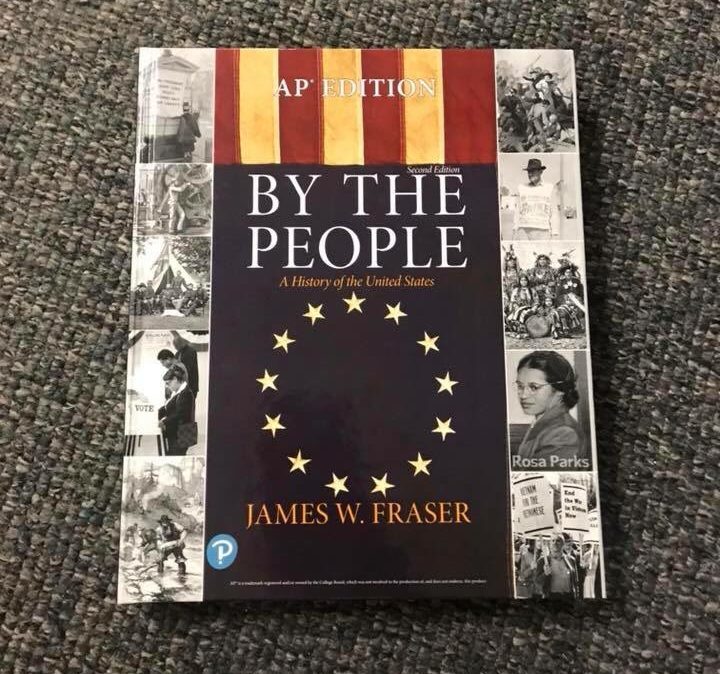
Reading like an Op-Ed from the New York Times or The Nation, the high school textbook says of the 2016 election:
Trump’s supporters saw the vote as a victory for the people who, like themselves, had been forgotten in a fast-changing America–a mostly older, often rural or suburban, and overwhelmingly white group. Clinton’s supporters feared that the election had been determined by people who were afraid of a rapidly developing ethnic diversity of the country, discomfort with their candidate’s gender, and nostalgia for an earlier time in the nation’s history. They also worried about the mental instability of the president-elect and the anger that he and his supporters brought to the nation.
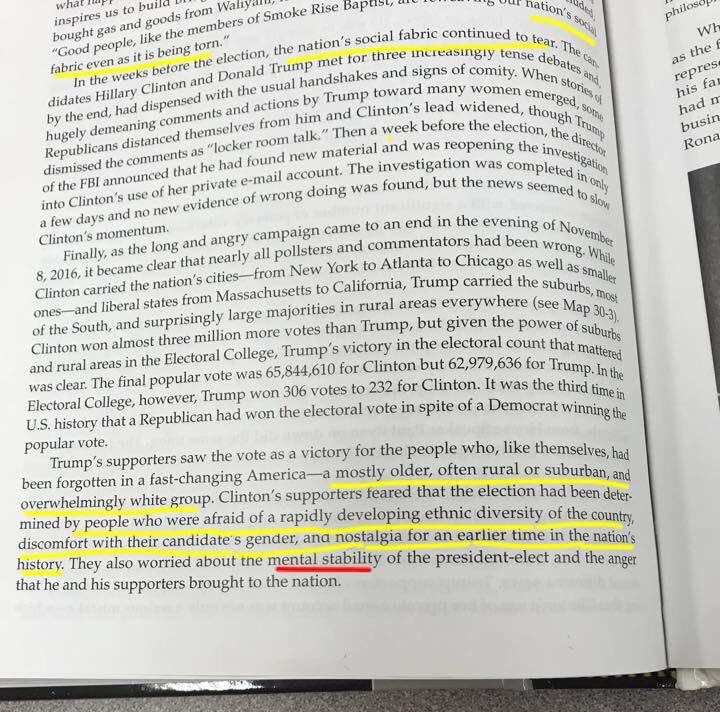
Whatever people’s opinions, on January 20, 2017, Donald J. Trump was inaugurated as the forty-fifth president of the United States. The inner circle of his advisors seemed to represent a mix of some deeply ideological conservatives, traditional politicians, and his family. His cabinet nominees were mostly highly successful business leaders who had made their fortunes and were now joining the team of another unusually successful businessman. They were largely white males, more so than any presidential cabinet since Ronald Reagan.
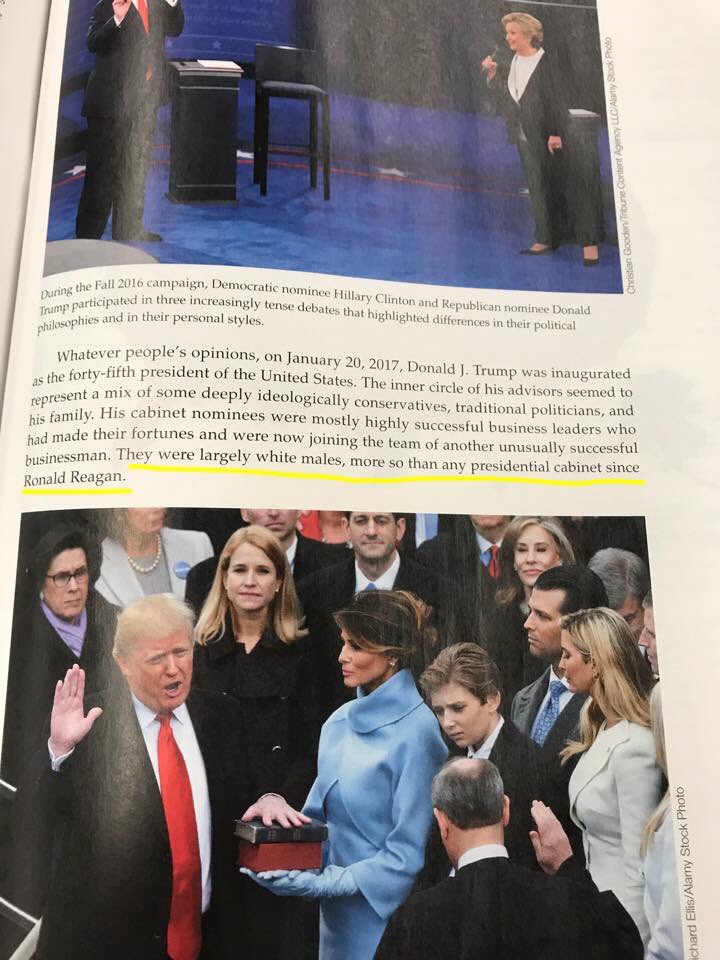
Another old, white conservative, of course.
Analyzing the Republican primary, the book claims “the former Florida governor Jeb Bush would emerge as a consensus candidate, but though he received strong financial backing, he never took off with Republican primary voters.”
But the textbook’s woeful author acknowledges Trump did.
He was strongly anti-free trade as Sanders was and, like Sanders among the Democrats, Trump tapped into the sense of alienation and “being left behind” that many voters–most of all white poor and working-class voters–felt. …
Most thought that Trump was too extreme a candidate to win the nomination, but his extremism, his anti establishment rhetoric and, some said, his not-very-hidden racism connected with a significant number of primary voters–more voters than any other single Republican candidate.”
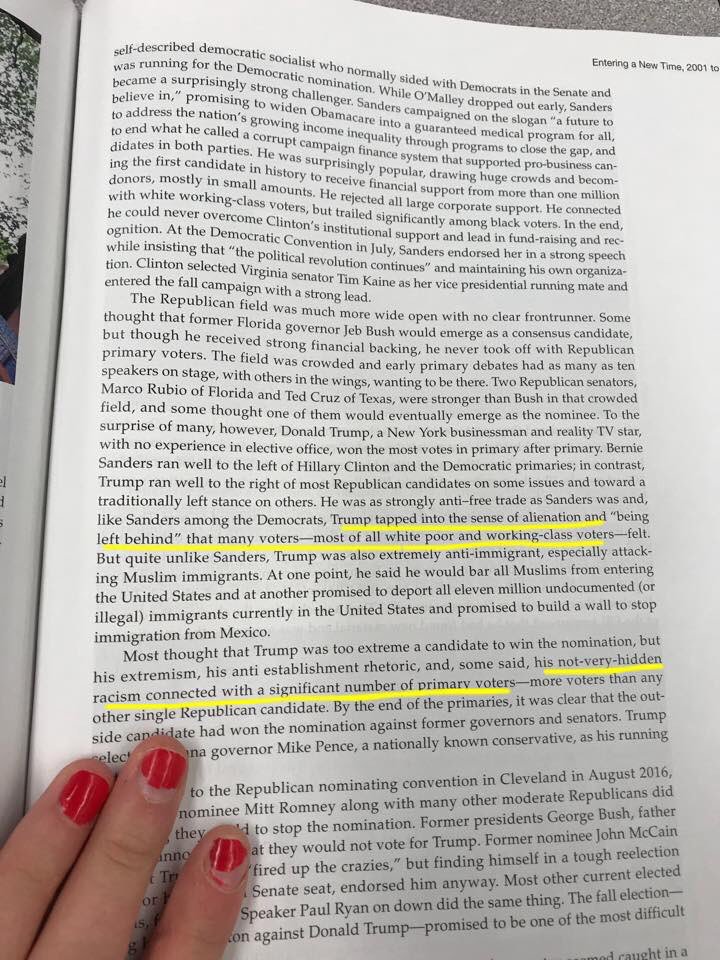
Note the book qualifies the opinions with “some said”– a common tactic to insert one’s own opinion. There is no contrary opinion offered.
Within the context of a portion on Barack Obama, the book states, “Those who had long thought of the nation as a white and Christian country sometimes found it difficult to adjust.”
In a section on the Black Lives Matter agitators, the book claims Michael Brown, the many who was killed by Ferguson, Missouri police in 2014, “was left on the street for over four hours while his parents were kept away at gunpoint.”
The history book blames the police and implies the department is racist, saying, “The nearly all-white police force was seen as an occupying army in the mostly African American town,” and “…police increased the tensions, defacing memorials set up for Brown and using rubber bullets on demonstrators.
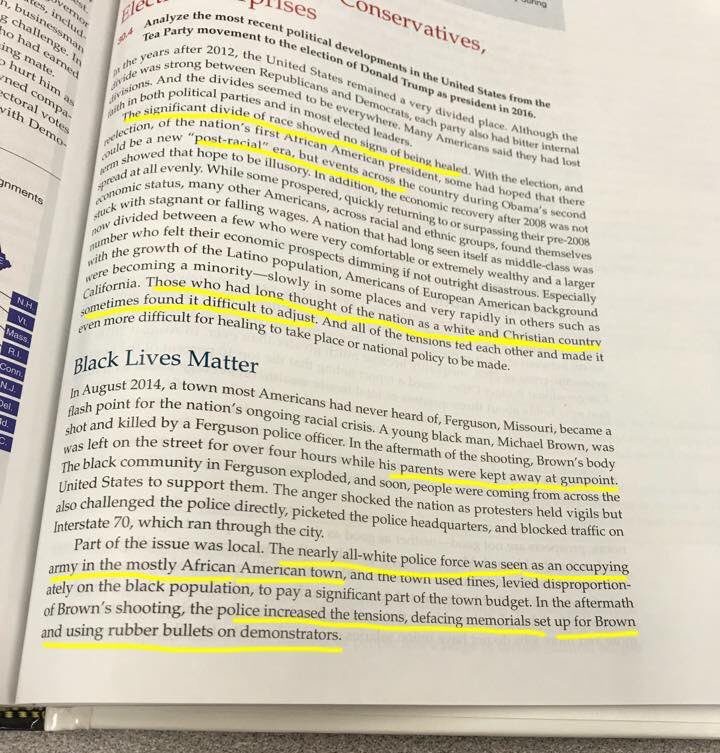
“In case you didn’t think there was an effort going on in public schools to indoctrinate kids with an anti-conservative agenda,” the radio host wrote when posting the examples, “a friend of mine took pictures and highlighted parts of this AP US History book.”
Leave a Comment
COMMENTS POLICY: We have no tolerance for messages of violence, racism, vulgarity, obscenity or other such discourteous behavior. Thank you for contributing to a respectful and useful online dialogue.